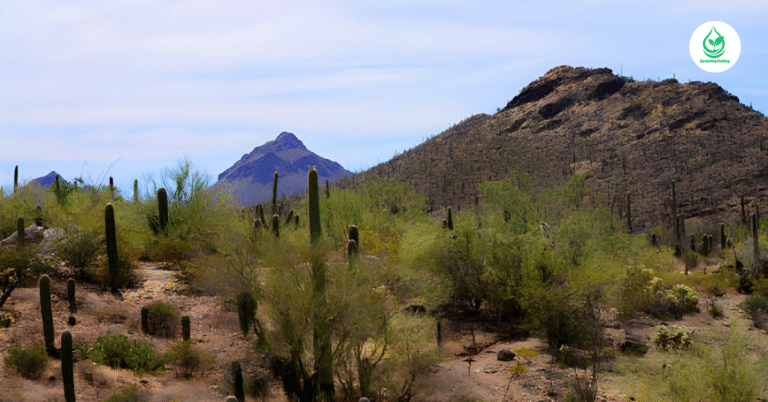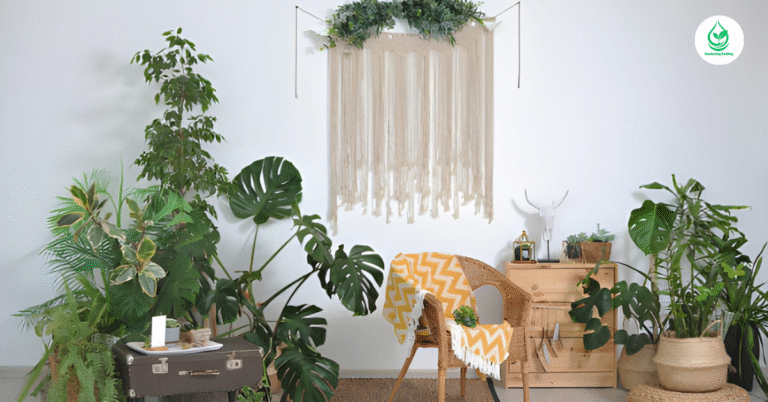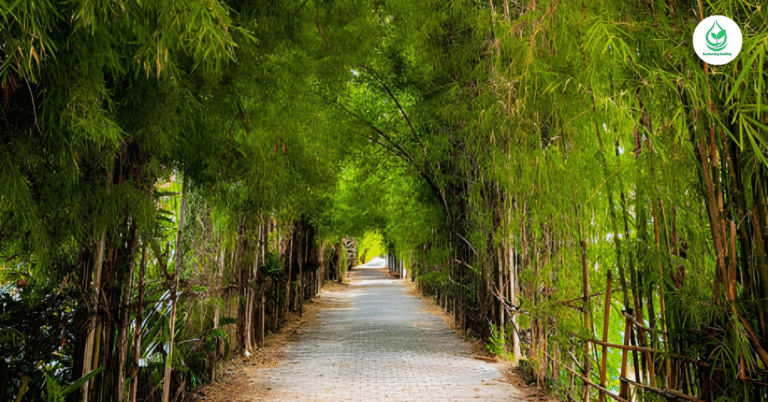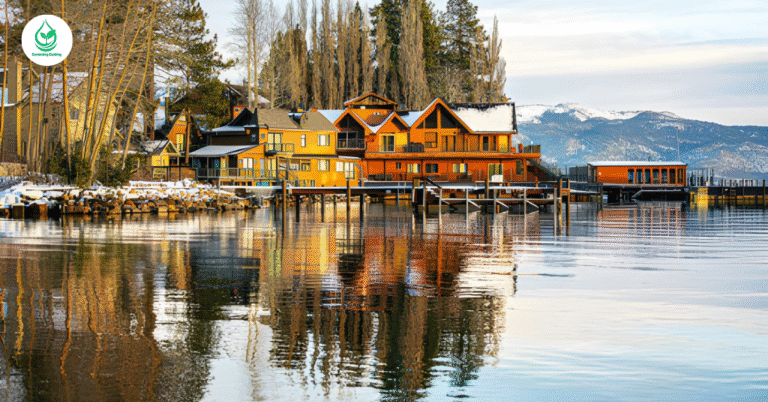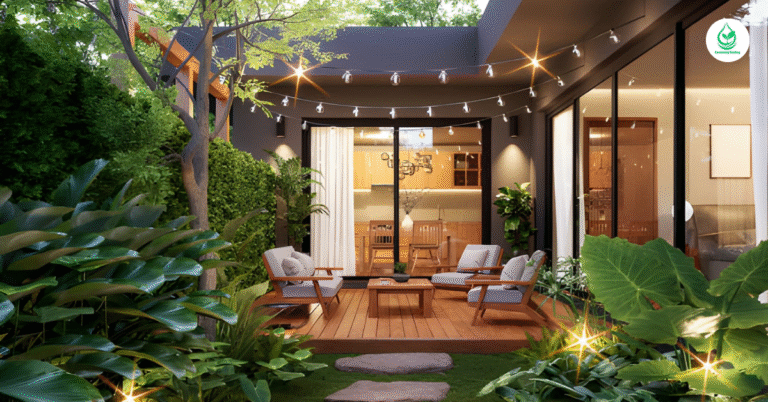6 Small Garden Design Ideas to Transform Tiny Spaces into Green Retreats

Introduction
Not everyone is blessed with a big backyard, but that doesn’t mean you can’t enjoy the beauty of nature at home. With the right ideas, even the tiniest space can be transformed into a lush, welcoming garden. Whether you live in an apartment, a townhouse, or a small urban home, there are smart ways to make the most of your limited outdoor space. In this article, we’ll look at 6 small garden design ideas that focus on creativity, functionality, and charm. These designs are easy to set up, budget-friendly, and guaranteed to add a refreshing touch to your lifestyle.
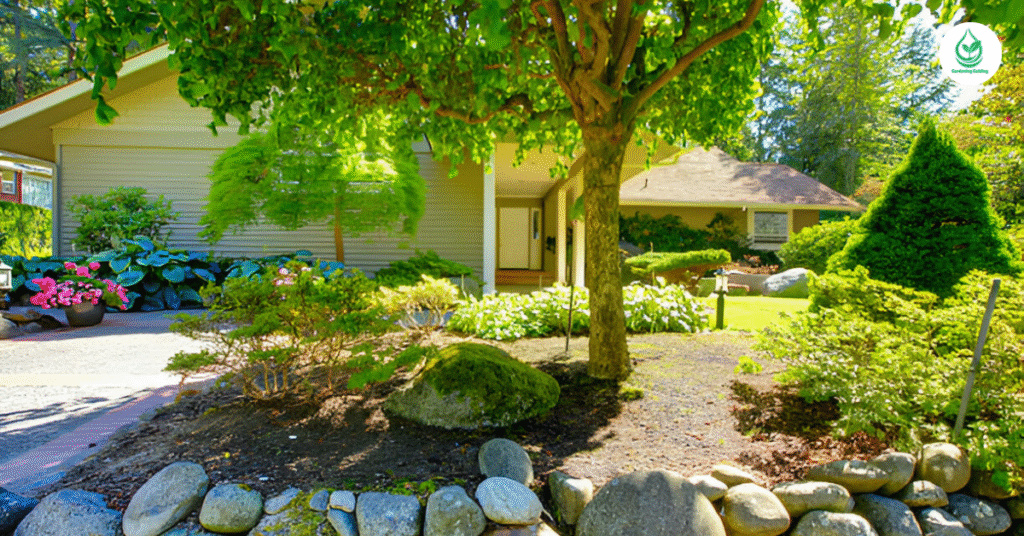
1. Vertical Garden Magic
Use Wall Planters
If floor space is limited, walls can become your best friend. Installing wall planters allows you to grow flowers, herbs, or even vegetables without occupying the ground. You can buy ready-made wall planters or make DIY wooden racks for a personalized touch. Apart from saving space, wall planters act as living décor and make dull walls look lively and attractive.
Install a Living Green Wall
A living wall, also known as a vertical garden, is one of the most stylish ways to maximize space. These walls are covered with plants and often come with built-in irrigation systems, which makes maintenance easier. They’re perfect for apartment balconies or narrow side yards where traditional gardens won’t fit. Plus, they improve air quality, keep the surroundings cooler, and instantly give your home a modern eco-friendly vibe.
Try Hanging Baskets
Hanging baskets are a simple yet powerful way to introduce greenery at different levels. They allow you to grow trailing plants like ivy, petunias, or strawberries, which cascade beautifully and add depth to your garden. You can hang them on hooks, balconies, or pergolas, which saves floor space and gives your garden a layered, lush appearance. This is especially useful for renters since baskets are portable and easy to maintain.
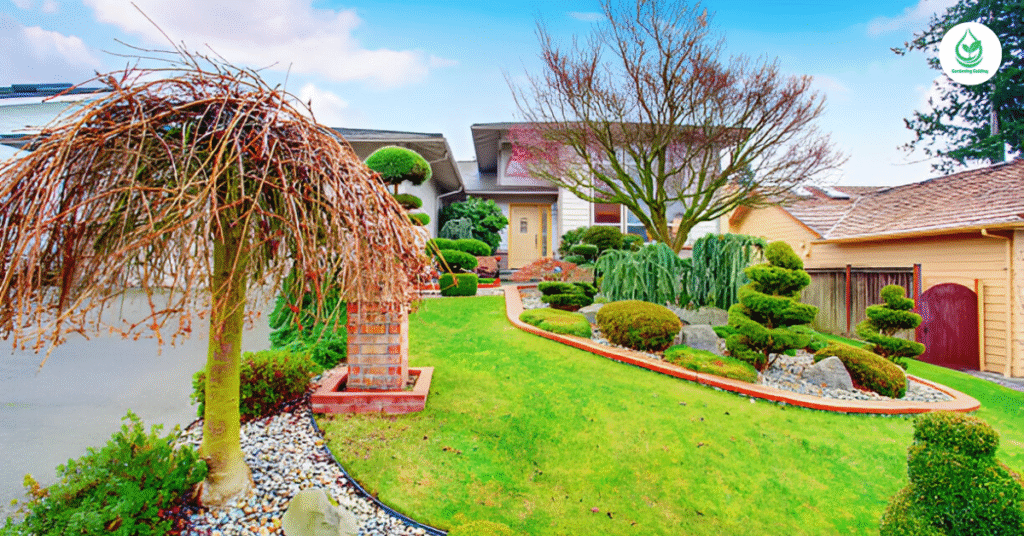
2. Container Garden Bliss
Use Mixed-Size Pots
Containers are incredibly versatile and perfect for small gardens. By mixing pots of different sizes, you create variety and visual interest. For example, tall pots can be used for decorative grasses, while smaller ones are great for herbs or flowers. Clay, ceramic, and wooden pots add texture and character, making the garden look thoughtfully designed rather than cluttered.
Moveable Greenery
One of the biggest benefits of container gardening is flexibility. If a plant isn’t thriving in one corner, you can easily move it to another spot where there’s more sunlight or shade. This flexibility allows you to experiment with arrangements and refresh your garden layout anytime you like. It’s a great option for people who enjoy redesigning their space without making permanent changes.
Grow Edible Plants
Small spaces don’t mean you can’t grow something useful. Herbs like mint, basil, parsley, and rosemary do exceptionally well in pots, and they’re always handy for cooking. You can also try compact vegetable varieties such as cherry tomatoes or peppers. Growing edibles makes your garden not only pretty but also practical—it adds freshness to your meals while saving money on groceries.
3. Cozy Corner Retreat
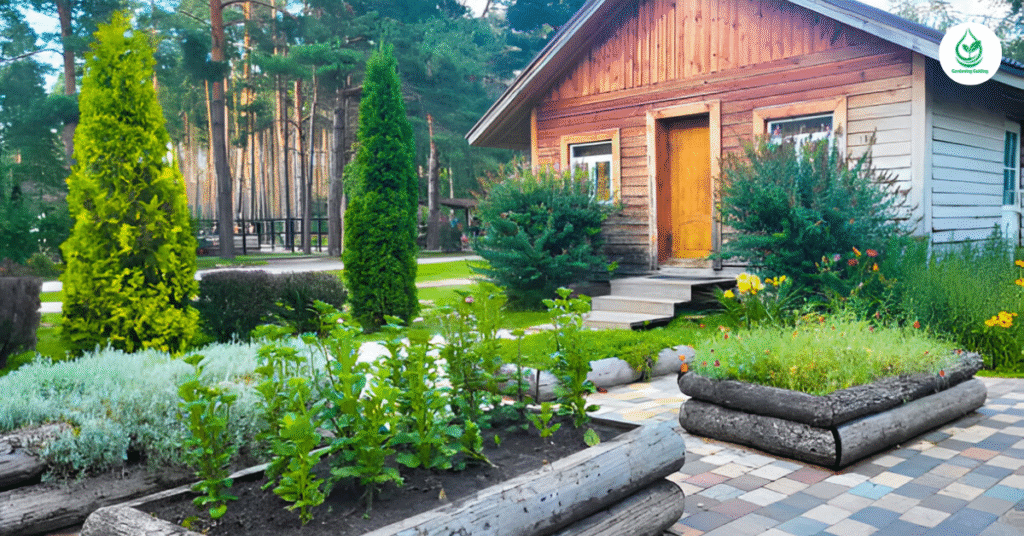
Build a Small Seating Area
Even the smallest garden deserves a space where you can sit back and relax. Adding a foldable chair, a wooden bench, or even a hammock can transform a corner into your personal retreat. With cushions or throws, the seating becomes inviting and comfortable. It’s the perfect spot to enjoy morning tea, read a book, or just unwind after a long day.
Add Potted Plants Around Seating
Placing potted plants around the seating area helps frame the space and makes it feel more private. You can use flowering plants for color, ferns for lush greenery, or even aromatic plants like lavender to create a calming effect. The plants soften the seating arrangement and give the area a natural, cozy vibe, making it your own little getaway within your home.
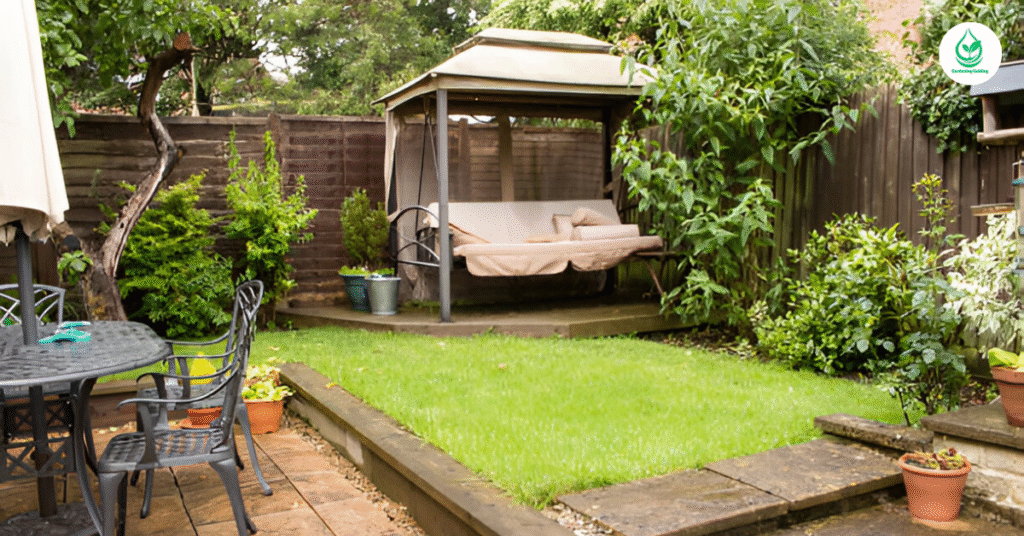
Use Lighting for Ambiance
Good lighting can completely transform the atmosphere of a garden. Solar-powered lanterns, fairy lights, or even small LED lamps can make your garden usable after sunset. Soft lighting adds warmth and romance, making the garden perfect for evening relaxation or small gatherings. It also creates an illusion of depth, making the small space appear larger than it actually is.
4. Pathway-Inspired Layout
Add Stepping Stones
Even in small gardens, pathways help define the space and make it look structured. By adding stepping stones or a gravel walkway, you can guide movement and separate different sections of your garden. It not only improves accessibility but also makes the design appear intentional and professional. Stepping stones can be customized in various shapes and colors to match your garden style.
Combine with Border Plants
Border plants add charm and softness to pathways. Low-maintenance plants like lavender, marigolds, or dwarf shrubs look stunning along the edges of a small walkway. They create neat boundaries, enhance visual appeal, and prevent soil erosion. This trick also helps in organizing small spaces, making them look neat and elegant rather than cramped.
Mix Materials for Style
Don’t be afraid to experiment with materials when creating pathways. Wood planks give a rustic charm, pebbles add a casual look, and stone tiles bring elegance. Mixing different textures and colors ensures that the garden looks unique and stylish. Even in small areas, these pathways add character and make the garden stand out as a thoughtfully designed space.
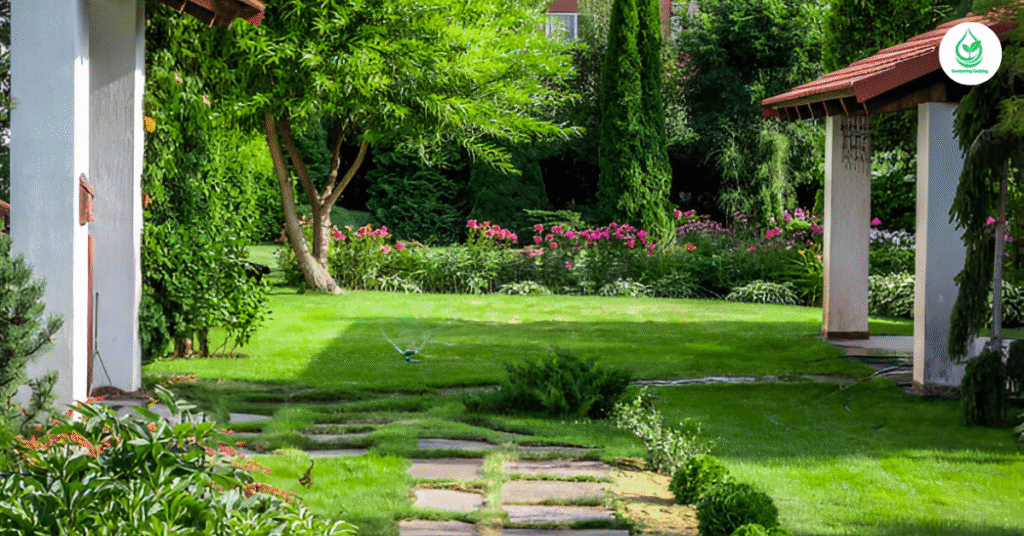
5. Raised Bed Charm
Easy to Organize Plants
Raised garden beds are a fantastic choice for small spaces because they allow you to grow plants in a controlled and organized way. By lifting the soil above ground level, you can separate flowers, herbs, and vegetables into neat sections. This makes maintenance easier and helps prevent weeds from spreading. Raised beds also make your garden look structured and polished.
Better Soil Control
One of the main benefits of raised beds is the ability to control the soil quality. If your backyard has poor soil, you can fill raised beds with nutrient-rich mixtures that promote healthy plant growth. This is especially useful for vegetables and flowers that need specific soil conditions. Plus, raised beds drain water more efficiently, reducing the risk of root rot.
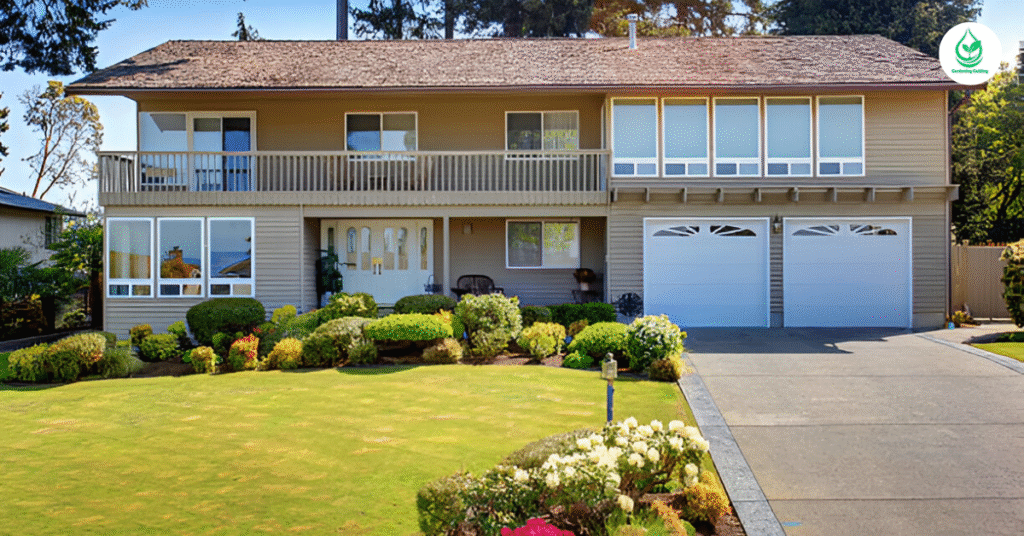
Adds Style to Small Gardens
Apart from being practical, raised beds also add aesthetic appeal to a small garden. Wooden or stone-framed beds create a rustic yet elegant look, while painted wooden boxes add a touch of creativity. Arranging multiple raised beds in rows or patterns brings symmetry and style, making even a tiny garden look well-designed and professional.
6. Multi-Functional Small Garden
Combine Seating with Planting
In small spaces, every inch counts. Combining seating areas with planters is a smart way to maximize functionality. For example, benches with built-in planter boxes let you relax while being surrounded by greenery. This design is space-saving and visually appealing, giving your garden a cozy yet practical layout.
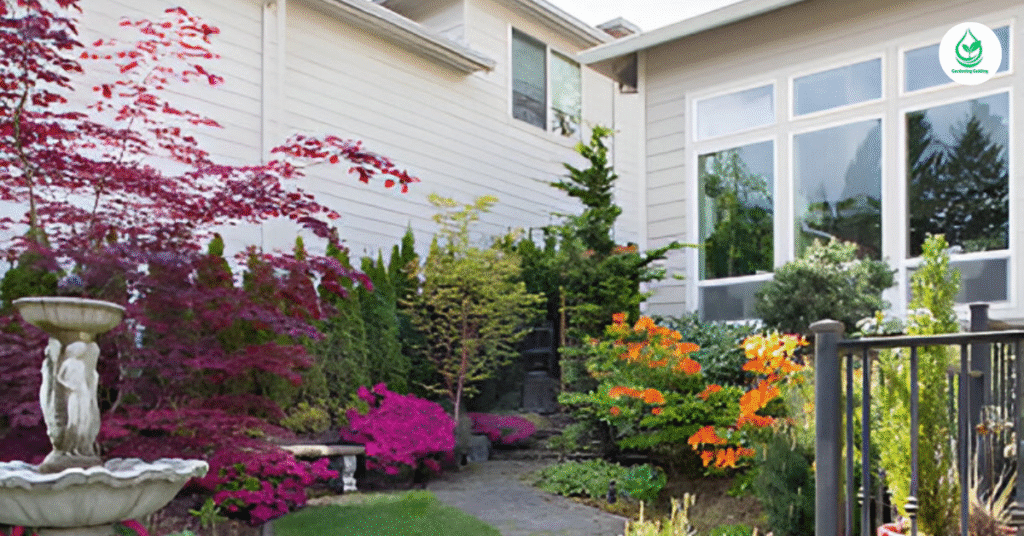
Use Multi-Purpose Furniture
Furniture plays a huge role in small gardens. Opt for foldable or stackable pieces that can be moved easily. Some modern designs include tables with storage underneath or chairs that double as planters. These creative solutions make your garden multifunctional while keeping it clutter-free.
Create Zones in Small Spaces
Even in tiny gardens, dividing the area into zones can make the space feel larger. For example, one corner can be for seating, another for potted plants, and a third for a small water feature. By organizing the garden into zones, you give it structure and make it more enjoyable to use. This also ensures the space looks intentional rather than crowded.
Conclusion
A small garden doesn’t mean limited potential. With the right design, even a balcony or tiny backyard can become a relaxing retreat filled with greenery and charm. From vertical gardens that save space to multi-functional layouts that maximize every inch, these 6 small garden design ideas prove that size is never a barrier to beauty. Whether you want a simple seating corner, edible container plants, or stylish raised beds, there’s a design here for you. Start small, experiment with creative ideas, and soon your compact garden will feel like a personal paradise.
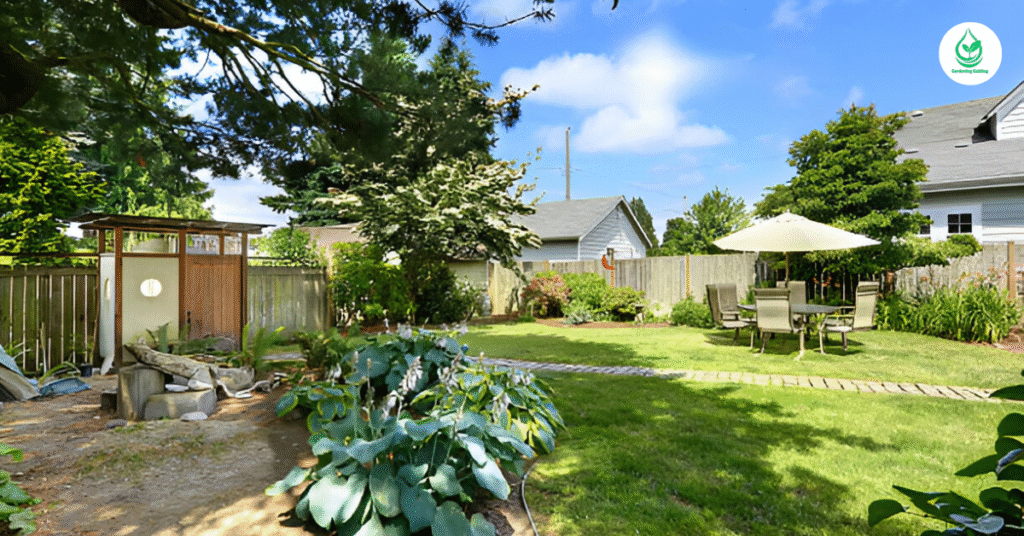
Pros and Cons of Small Garden Designs
Pros
- Space-Efficient – Perfect for urban homes with limited outdoor areas.
- Budget-Friendly – Small gardens cost less to design and maintain.
- Low Maintenance – Fewer plants mean easier care and watering.
- Creative Potential – Forces you to think outside the box for unique layouts.
- Personal Retreat – Even the tiniest garden can provide relaxation and joy.
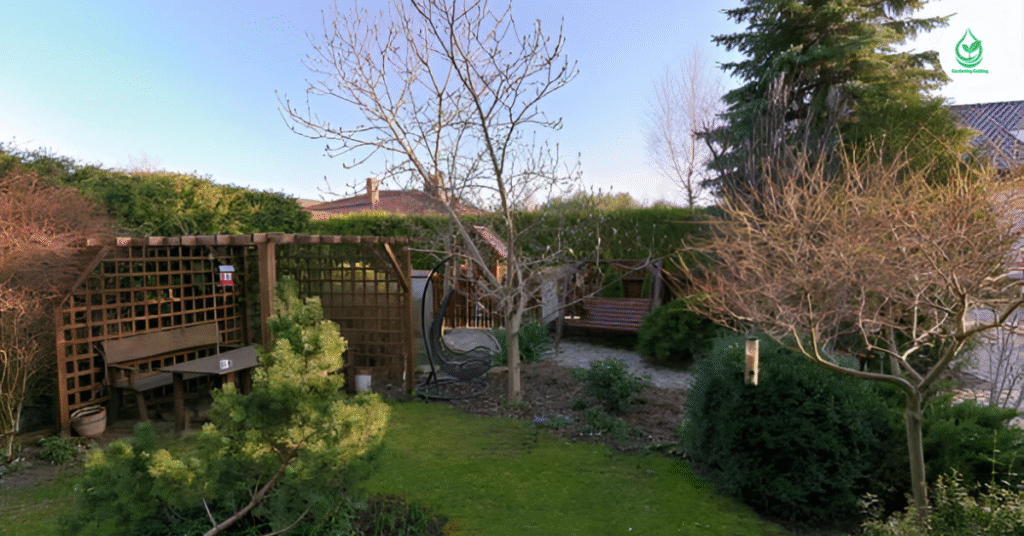
Cons
- Limited Plant Variety – Not all plants can thrive in small spaces.
- Less Privacy – Small gardens may feel more exposed in urban settings.
- Clutter Risk – Without careful planning, the area can look overcrowded.
- Sunlight Challenges – High buildings or walls may limit sunlight.
- Storage Issues – Less room for tools, furniture, or large décor items.
Comparison Table of 6 Small Garden Designs
| Garden Design | Best Feature | Space Needed | Maintenance |
| Vertical Garden Magic | Maximizes wall space | Very Small | Low |
| Container Garden Bliss | Flexible and moveable | Small Balcony | Medium |
| Cozy Corner Retreat | Relaxation area with plants | Corner Space | Medium |
| Pathway-Inspired Layout | Adds structure and flow | Small Yard | Medium |
| Raised Bed Charm | Organized planting & soil control | Small Backyard | Medium-High |
| Multi-Functional Garden | Combines seating & greenery | Tiny Spaces | Medium |
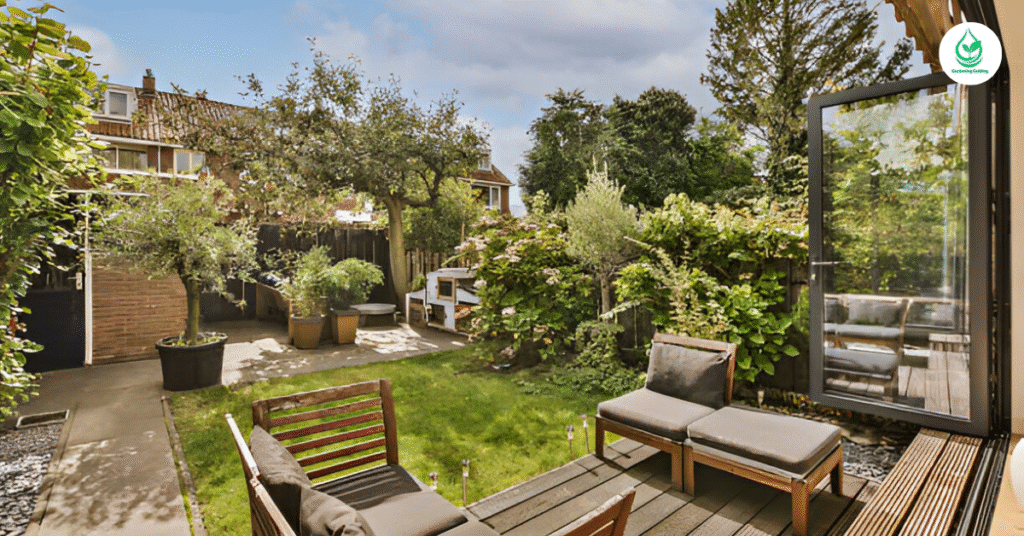
FAQs About Small Garden Design
Q1. What plants are best for small gardens?
Herbs, succulents, dwarf shrubs, and compact vegetables like cherry tomatoes are ideal. They grow well in pots and require minimal space.
Q2. How do I make a small garden look bigger?
Use vertical gardening, mirrors, and light-colored furniture to create the illusion of more space. Dividing the area into zones also makes it feel larger.
Q3. Can I grow vegetables in a small garden?
Yes! Many vegetables such as peppers, spinach, and lettuce can thrive in containers or raised beds, making them perfect for small gardens.
Q4. How do I design a garden on a balcony?
Choose lightweight pots, hanging baskets, and railing planters. Make sure the plants receive enough sunlight and use waterproof trays to protect flooring.
Q5. What is the cheapest way to design a small garden?
Start with DIY containers, recycled furniture, and low-maintenance plants. You can also upcycle wooden crates or pallets into garden furniture.
Q6. How do I add privacy to a small garden?
Use tall plants, bamboo screens, or trellises with climbing vines to create natural barriers. This adds privacy without taking up much room.
Q7. Do small gardens need special lighting?
Yes, lighting enhances ambiance and usability. Solar lights, fairy strings, or lanterns are affordable and perfect for compact spaces.
Q8. Can I add water features to a small garden?
Yes, mini fountains or tabletop water features work well. They create a relaxing sound without requiring large space.
Q9. How do I keep a small garden low maintenance?
Opt for drought-resistant plants, self-watering pots, and drip irrigation systems. These save time and reduce daily effort.
Q10. Is it possible to combine indoor and small outdoor gardens?
Absolutely! You can connect them by placing potted plants near windows or using the same plant types indoors and outdoors for a seamless look.

